Art Fairs
Political Art Is Out in Force at Frieze. The Question Is: Does Anyone Actually Buy It?
Art that deals with the refugee crisis, Trump, and police brutality can be found at the fair. But it's a tough sell.
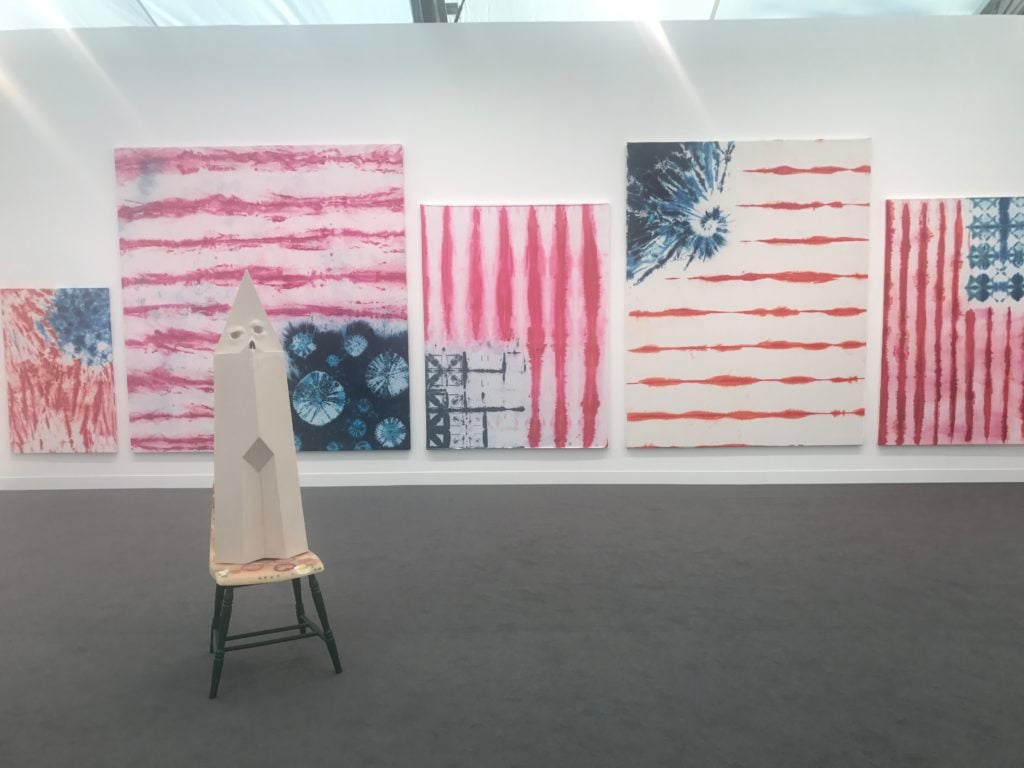
Art that deals with the refugee crisis, Trump, and police brutality can be found at the fair. But it's a tough sell.

Julia Halperin

Art fairs are a bit like casinos. People spend extraordinary amounts of money there, time passes either very quickly or very slowly, and the real world is typically kept far at bay. But as reality becomes harder and harder to ignore, art that deals with hot-button world affairs has become an increasingly common presence at these commercial events. That doesn’t mean collectors are buying it, however.
At the Frieze Art Fair in London this year, which opened to the public yesterday, Richard Mosse’s massive photograph of the Tel al-Sarhoun refugee camp in Lebanon, priced at $44,000, is displayed prominently at Jack Shainman’s stand. (The camp suffered a devastating fire in July, not long after the photo was taken.)
The Modern Institute hung Adam McEwen’s fake obituary for the Nobel Prize winner Aung San Suu Kyi (priced at $45,000) on the same day that she was stripped of her Freedom of Oxford award due to her apparent defense of Myanmar’s treatment of its Rohingya minority. And Andra Ursuta’s 2015 cement sculpture of a church tower that resembles a KKK hood, on view at Massimo De Carlo and listed at $45,000, took on new meaning in the wake of recent alt-right demonstrations in the US.
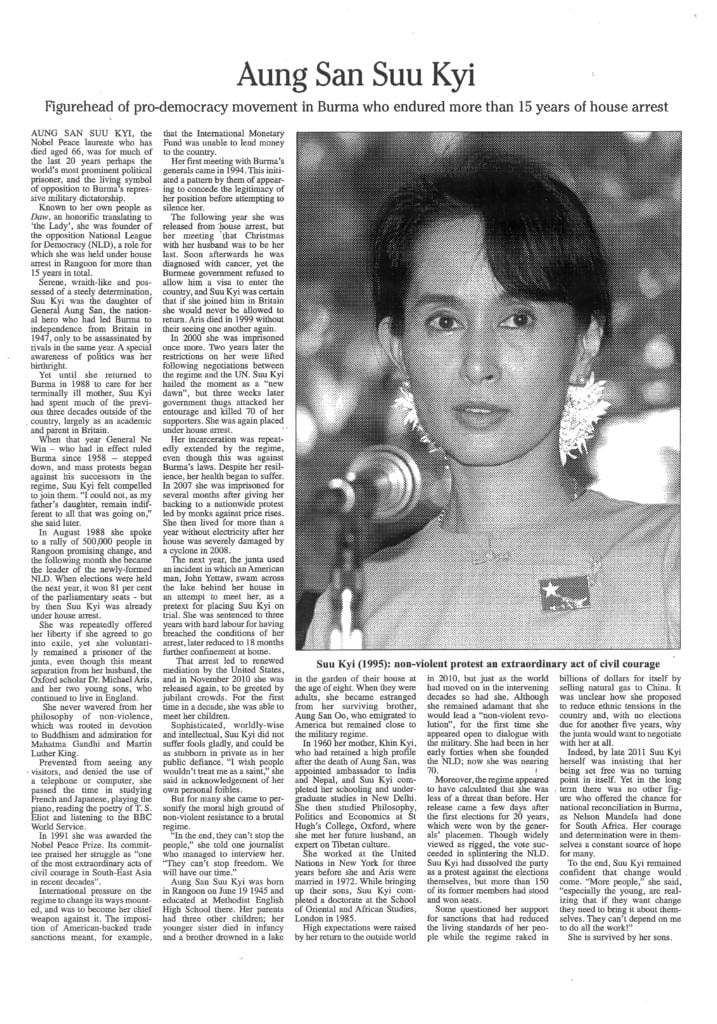
Adam McEwen’s Untitled (Suu Kyi) (2011). Courtesy of the artist and The Modern Institute/Toby Webster Ltd., Glasgow.
But what happens when art that deals explicitly with national trauma is displayed alongside day-glo paintings by KAWS (which sold out at Perrotin’s booth) and a gazing ball painting by Jeff Koons (which sold during the VIP preview at David Zwirner for $2.75 million, according to the gallery)?
Most dealers agree that although overtly political work is supported by a handful of dedicated collectors, it does not exactly fly off the walls. Even at a time when politics is more likely than ever to enter into polite conversation, “people don’t always want to be confronted by this stuff,” says Stefan Benchoam of Proyectos Ultravioleta, which is presenting a solo booth of work by the Guatemalan artist Regina José Galindo.
Priced between €5,500–25,000, Galindo’s works—based on a performance she developed for documenta 14 in which she ran from a German war tank for nine hours—were still available on Thursday, along with those by Mosse, McEwen, and Ursuta.
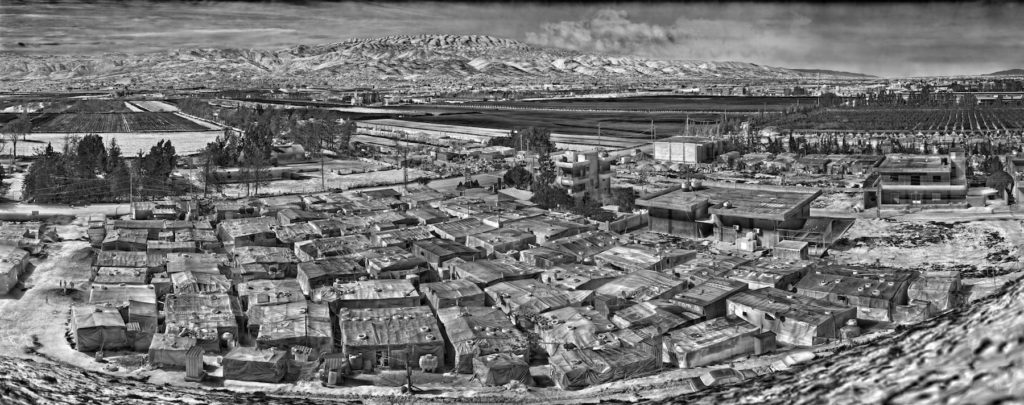
Richard Mosse’s Tel Sarhoun Camp Lebanon (2017). © Richard Mosse. Courtesy of the artist and Jack Shainman Gallery, New York
“In the majority of cases, artwork that is overtly political does not sell at the same price level when compared to artwork that reveals its point of view in a more subtle manner,” says the art advisor Todd Levin, the director of the Levin Art Group.
At Frieze Masters, Boers-Li Gallery sold several abstract paintings by the Chinese artist Huang Rui (priced between $90,000–120,000) created in the aftermath of the Tiananmen Square protests in 1989. The dealer Franklin Parrasch, meanwhile, presented a 1976 red work on paper by Joan Snyder titled Study for Rape Burn Murder, an abstract protest of the Vietnam War priced in the five figures.
“It’s not hard to sell, though I think it would go for more money if the title were Crimson,” Parrasch says. “But then, I would be bored if the title were Crimson.”
Dealers bring politically engaged work to fairs for many reasons, some of which have little to do with sales. Many want to take advantage of the critical mass of eyeballs to promote an artist or a particular body of work. Galerie Lelong, for example, teamed up with Goodman Gallery to present a series by Alfredo Jaar created in the aftermath of the 1973 Chilean coup d’état that has rarely been exhibited in the UK.
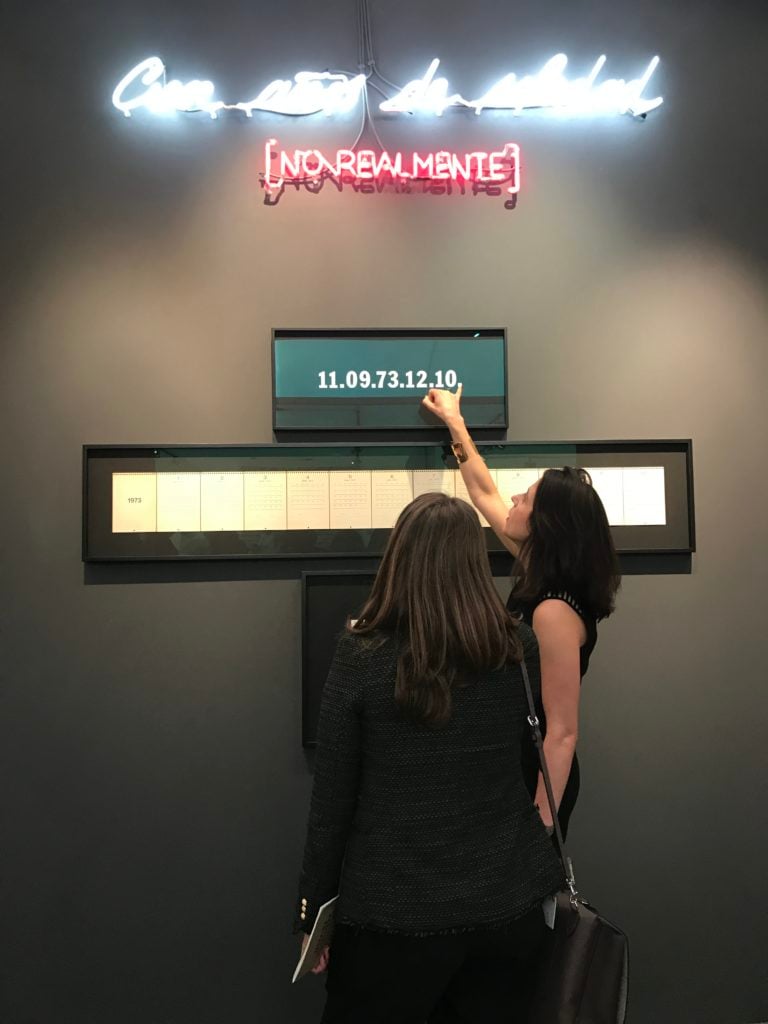
A solo booth dedicated to Alfredo Jaar at Frieze Masters co-presented by Galerie Lelong and Goodman Gallery. Photo: Julia Halperin
“Art fairs have become places where curators come to look,” says Lelong’s vice president Mary Sabbatino. “And we want people to identify this work with Alfredo.”
The decision to showcase work that responds to current events can also help broadcast the gallery’s own priorities, which in turn attracts like-minded artists and collaborators. “Gallery decisions on the art shown at Frieze are as much about branding as they are about sales,” notes the San Francisco-based collector Mihail Lari.
Meanwhile, there is a supportive—and, some say, growing—audience for this material. “It’s different than it was 10 years ago,” says Eduardo Brandão of Vermelho Gallery, which sold a map of contested Northwest Pakistan by Dora Longo Bahia priced at $20,000. “In the beginning, just curators went for it. That’s not true anymore.”
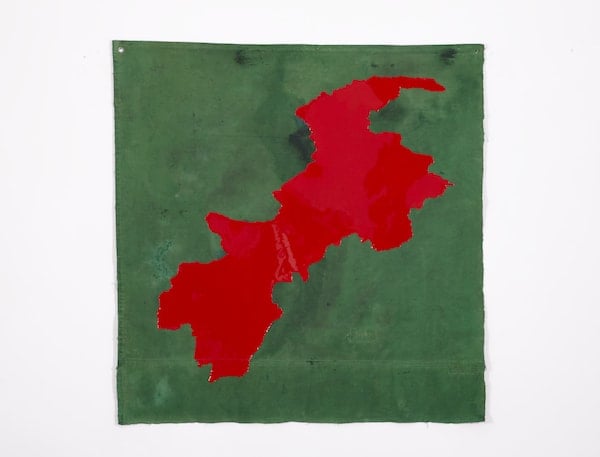
Dora Longo Bahia’s Gel Poetics (War in North West Pakistan 2004) – on going conflicts (2012)
“I have some clients who say, ‘I want your toughest things,’” Shainman says. The New York-based dealer sold an edition of Hank Willis Thomas’s wall sculpture Faith (2017), a basketball supported by two hands in prayer, to the 21c Museum Hotel in Louisville, Kentucky (priced at $65,000) and Titus Kaphar’s Shifting the Gaze (2017)—priced at $80,000 and the subject of a highly watched TED Talk—to an American museum.
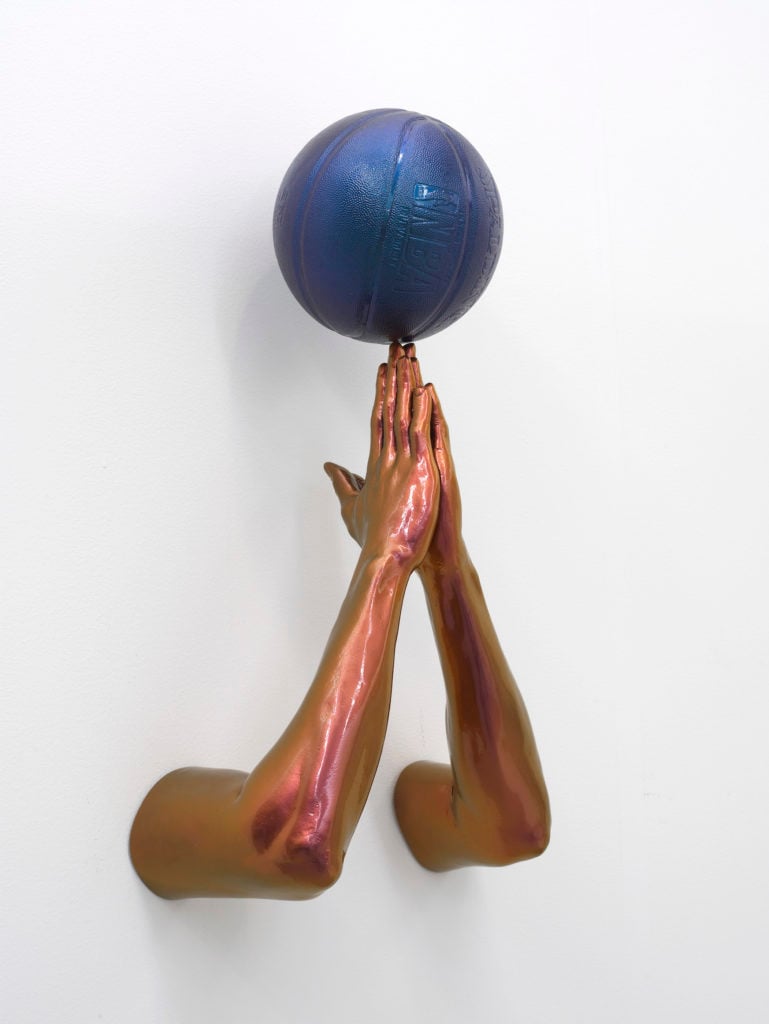
Hank Willis Thomas’s Faith (2017). © Hank Willis Thomas. Courtesy of the artist and Jack Shainman Gallery, New York.
Gavin Brown’s enterprise, meanwhile, sold an edition of Arthur Jafa’s Ex-Slave Gordon (2017), a three-dimensional wall work based on the widely reproduced photograph of a scarred escaped slave, for $35,000. Andrew Kreps sold a neon text work by Andrea Bowers that reads “My Body My Choice, Her Body Her Choice” for $55,000. And Greene Naftali sold an edition of Paul Chan’s Pillowsophia (after Trinity) (2017), an inflatable disembodied hoodie that hovers like a crucifix over the aisles as a memorial to police brutality, for $80,000.
The gallery’s Jeffrey Rowledge notes that collectors who acquire highly political work are usually doing it for love, not money. “Art as an investment is not always their starting point,” he says.
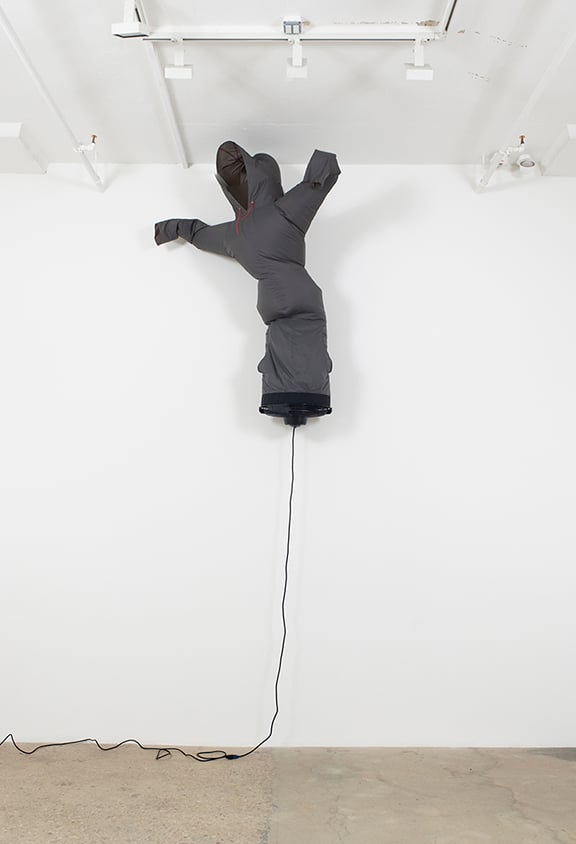
Paul Chan’s Pillowsophia (after Trinity) (2017). Photo courtesy Greene Naftali.
Many observers agree there is more overtly political art at fairs today than in years past—“but only because the creation of overtly political artwork has become more common over time,” Levin says.
At Frieze Masters, galleries capture a parallel moment in art history almost 50 years ago, when even artists who did not normally create political work felt compelled to respond to Vietnam, the Civil Rights movement, and the Cold War.
In a booth dedicated to the year 1968, for example, Massimo de Carlo presents a painting that Gastone Novelli originally created for that year’s Venice Biennale. Just before the opening, Novelli turned his monochrome canvases backward in protest, and scrawled on the back: “The Biennale is fascist.” (The painting is on offer for €300,000.)
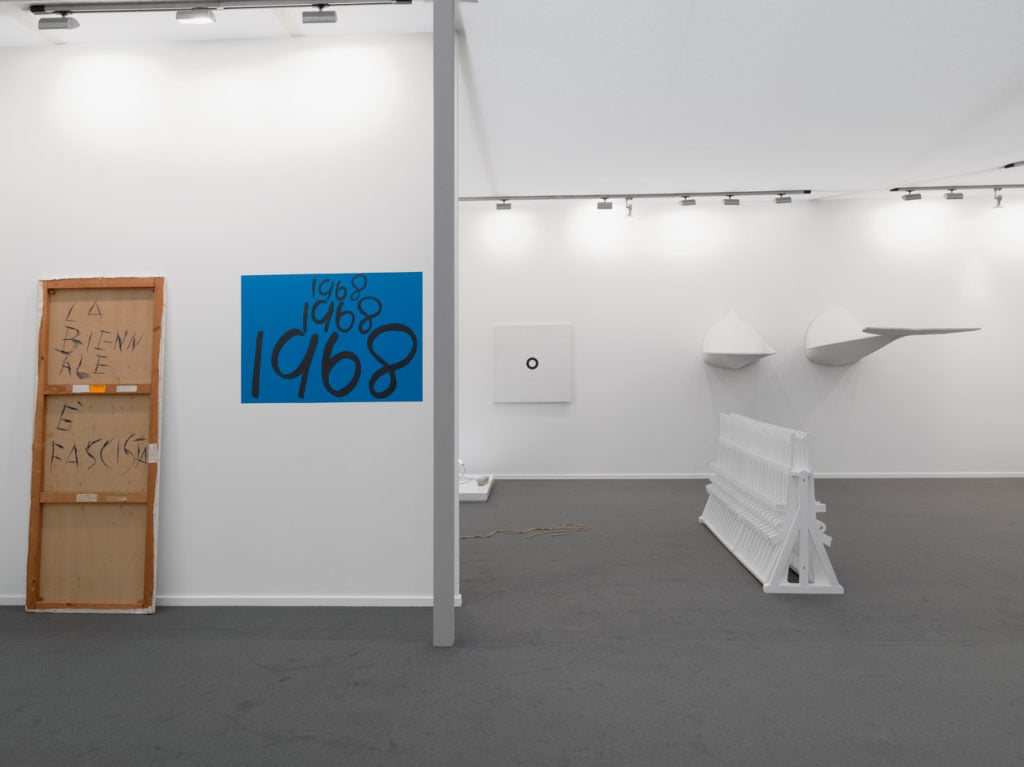
Massimo de Carlo’s booth at Frieze Masters, including Gastone Novelli’s Lutte, échec, nouvelle lutte (1968). Photo courtesy of the gallery.
And just as some artists have felt motivated to create more political work in response to current events, collectors have felt more inspired to buy it.
“The rise of Trump, the gains by the German right wing, the vote on Brexit, the rising gun violence continue to affect all of us,” says Lari, who acquired Sam Durant’s Open Your Eyes (2017) from an exhibition of protest signs at Sadie Coles HQ earlier this year. “And it is impossible for it to not impact our collecting.”